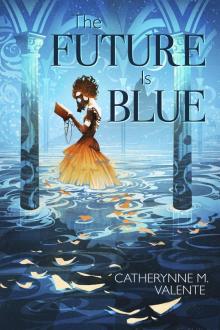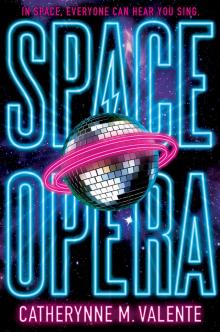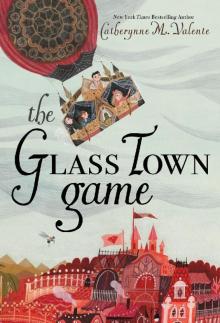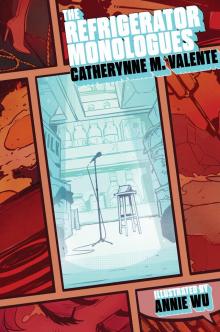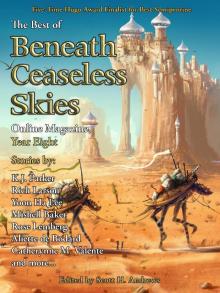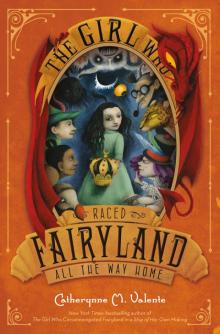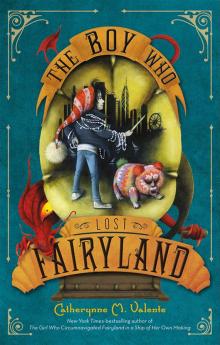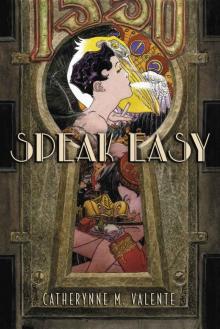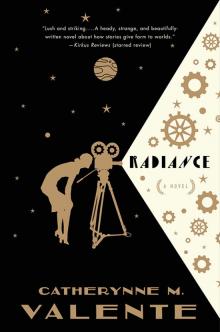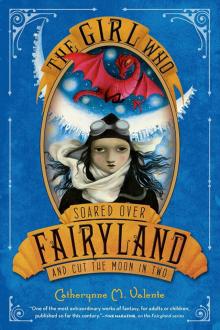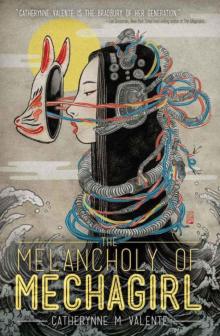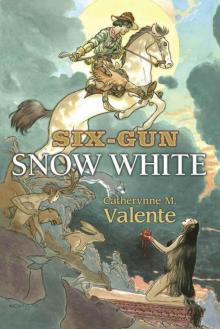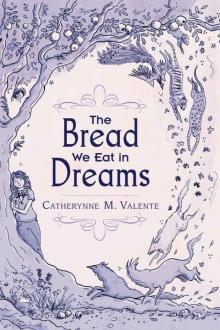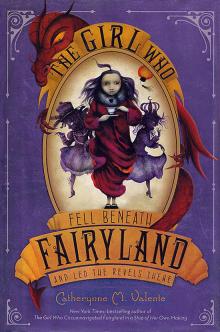


Guns (Kindle Single), Page 2
Stephen King
Drunks in a barroom.
Jesus wept.
Only I’m not a drunk, and although I’m a blue-state American now, I was raised a red one, and I’ve spent my life with at least half of one foot still in that camp. It gives me a certain perspective. It also allows me to own my handguns — I have three — with a clear conscience.
Even if I were politically and philosophically open to repealing the Second Amendment (I’m not), I don’t believe that repeal, or even modification, would solve the problem of gun violence in America, particularly violence of the sort that’s at the root of that problem. Although I need to add that I also believe strict gun control would save thousands of lives. Later, we’ll talk about Australia, where that has happened.
Pass it for now, though. Let’s talk about reality. The death toll at the Sandy Hook school was 26, and I mourn every one of them, but the number of homicides in Chicago last year exceeded 500. That’s 200 more than the number of American troops killed in Afghanistan during the same period. And let’s remember that our troops volunteered to go in harm’s way. Their bodies come home to parades and flag-draped coffins. The dead of Chicago — 107 of them children, some just waiting to get on the school bus — don’t get the hero treatment, but they are just as dead. Gun control would do little to change that situation, because the guns are already out there and the great majority of them are being bought, sold, and carried illegally.
The best we can do for handgun violence is to impose strict mandatory prison sentences on those who use them or carry them concealed without a license to do so (plus background checks, which I’ll get to). Los Angeles and New York (other cities, too) have tried the carrot as well as the stick, in the form of gun buyback programs. Good luck to them. In LA, over 8,000 guns — and two rocket launchers — have been turned in for cash since 2009. Sound good? Maybe, until you add this: in 2012 alone, Californians bought three-quarters of a million rifles and handguns. Honey, that’s a lot of firepower.
Liberals and gun control advocates (they are not exactly the same, no matter what paranoids like Mr. Wayne LaPierre may try to tell you) understand that a great many horses have already left the barn, and that’s one reason why the gun control issue flares, then dies until the next high-profile shooting. The libs think of the millions of guns already out there, and their shoulders just slump. Even those most passionate on the subject give off a faint what’s-the-use vibe.
You might think things would be different in Newtown, Connecticut, where the Sandy Hook shootings took place, but it’s not; it’s still drunks in a barroom. After all, Colt Firearms is just up the road, in Hartford, and honey, that’s a lot of jobs. The starry blue dome marking the old Colt factory is a city landmark for good reason.
IV. Culture of Violence
I also don’t believe the NRA’s assertion — articulated by Mr. LaPierre each time there’s another mass murder by gun in a school or a shopping mall — that America’s so-called “culture of violence” plays a significant role in kid-on-kid school shootings. That this idea has gained even a shred of acceptance simply proves what George Orwell knew when he wrote 1984: if you say a thing often enough, it will be accepted as truth. Let me be frank: The idea that America exists in a culture of violence is bullshit. What America exists in is a culture of Kardashian.
Of the ten most popular works of fiction published in 2012, only two feature any kind of violence: George R.R. Martin’s A Game of Thrones (no guns, just swords) and John Grisham’s The Racketeer (your basic chase story, no shooting necessary). Gone Girl, by Gillian Flynn, is a beautifully constructed mystery. The rest of 2012’s big winners are romances, all but one (The Lucky One, by Nicholas Sparks) of the sexed-up genre now known as “mommy-porn.” There are plenty of shoot-’em-up American novels, but they rarely make the bestseller lists, no more than Rage did when it was published.
American movies have always been a violent medium — remember James Cagney brandishing a gun atop a natural gas tank at the end of Public Enemy and proclaiming, “Top of the world, Ma”? — but if you take a close look at the dozen top-grossing films of 2012, you see an interesting thing: only one (Skyfall) features gun violence. Three of the most popular were animated cartoons, one is an R-rated comedy, and three (The Avengers, The Dark Knight Rises, and The Amazing Spider-Man) are superhero films. I think it’s important to note that Iron Man, Spider-Man, Batman, and others of their costumed ilk don’t carry guns; they use their various exotic powers. When those fail, they ball up their good old all-American fists. Superhero movies and comic books teach a lesson that runs directly counter to the culture-of-violence idea: guns are for bad guys too cowardly to fight like men.
In video gaming, shooters still top the lists, but sales of some, including the various iterations of Grand Theft Auto and Call of Duty, have softened by as much as 4 percent (gaming companies like Gamasutra are notoriously coy when it comes to reporting sales figures). There’s no doubt that teenage boys and girls like to blow off steam with games like Hitman: Absolution, but when you look at the bestseller lists, you find they’re also loaded with sports games like Farza Motorsport 4 and Madden NFL. Old standbys like Super Mario Brothers and Pokémon enjoy perennial success. When it comes to Wii, the 2012 bestseller was a pop-music sweetie called Just Dance 4. I’d be willing to bet no kid, no matter how disturbed, was inspired to go out and shoot up a classroom by boogeying around his living room to “Moves Like Jagger.”
There are violent programs on television — Breaking Bad, Justified, and Boardwalk Empire all come to mind — but the only one that seems to appeal to teens is AMC’s The Walking Dead. There’s plenty of gunplay in that one, but almost all of it is directed at people who have already expired. The Nielsen ratings for the pre-Christmas week of 2012 shows football, football, and more football (violence, yes; guns, no). There were also two sitcoms and three CBS detective shows, two from the NCIS franchise, where the emphasis is on detection.
The message is clear: Americans have very little interest in entertainment featuring gunplay. In the 1980s, filmmakers even introduced a new ratings category, PG-13, to protect younger children from graphic violence. The first film to be so rated was the original Red Dawn, and I would argue that it and all the PG-13 shooters that have followed propagate their own form of gun-porn by suggesting that shooting people equals wholesome adventure, and by refusing to acknowledge what happens to people who take a bullet in the stomach or the head. There’s little or no blood in films like Skyfall, and certainly no torn flesh — show those things and you get slapped with an R, which keeps millions of early adolescents from getting past the box office (contrary to the belief of many conservatives who go to the movies but once a year, exhibitors tend to be quite strict about enforcing the R rating). The result has been action movies that hark back to the old Hopalong Cassidy days, where the baddie would simply clutch his chest and topple over. All very sanitary.
As my gun-toting friends will tell you, real death by gunshot isn’t like that. If you want to see what it is like, check out Sam Peckinpah’s Western, The Wild Bunch. Peckinpah shows more realistic consequences of gun violence. It’s not pretty, and that’s putting it mildly. A large-caliber gunshot wound is horrifying. If you think the outcry against guns was loud following Sandy Hook, imagine what it would have been like had the public been exposed to pictures of what those gore-splattered rooms and hallways looked like when the first responders entered them.
The assertion that Americans love violence and bathe in it daily is a self-serving lie promulgated by fundamentalist religious types and America’s propaganda-savvy gun-pimps. It’s believed by people who don’t read novels, play video games, or go to many movies. People actually in touch with the culture understand that what Americans really want (besides knowing all about Princess Kate’s pregnancy) is The Lion King on Broadway, a foul-talking stuffed toy named Ted at the movies, Two and a Half Men on TV, Words with Friends on their iPads, and Fifty Shades of Grey on their Kindles. To claim that America�
��s “culture of violence” is responsible for school shootings is tantamount to cigarette company executives declaring that environmental pollution is the chief cause of lung cancer.
V. From My Cold Dead Hands
When I think of the politically conservative gun enthusiasts who are opposed to any form of gun control, no matter how many innocents die in acts of gun violence, I remember something a Democratic member of the House of Representatives is reputed to have said about Gerald Ford: “If he saw a hungry child as he walked to work, he would give that child his bag lunch without hesitation, then go ahead and vote against school lunch subsidies without ever seeing the contradiction.”
Most anti-control firearms enthusiasts have similarly split personalities, and the slogan you sometimes see pasted to the bumpers of their station wagons, campers, and SUVs — YOU WILL TAKE MY GUN WHEN YOU PRY IT FROM MY COLD DEAD HANDS — does not make them bad people. It only makes them walking contradictions, and which of us does not have a few contradictions in our personalities?
Most Americans who insist upon their right to own as many guns (and of as many types) as they want see themselves as independent folk who stand on their own two feet; they may send food or clothes to the victims of a natural disaster, but they sure-God don’t want charity themselves. They are, by and large, decent citizens who help their neighbors, do volunteer work in the community, and would not hesitate to stop and help a stranger broke down by the side of the road. They are more apt to vote for increasing law enforcement funds than they are for increasing school improvement funds, reasoning (and not without some logic) that keeping kids safe is more important than getting them new desks. They have no problem with drug and alcohol recovery centers … as long as they are in someone else’s neighborhood. They can weep for the dead children and bereft parents of Sandy Hook, then wipe their eyes and write their congressmen and women about the importance of preserving the right to bear arms.
They declare they must keep those arms — not excluding those of the semiautomatic type — for home defense. They’re plenty worried about home defense. They see the world as a fundamentally dangerous place and their homes as castles that crazy people of The Texas Chainsaw Massacre type may try to invade at any time. Ask them if they have ever actually been a victim of a home invasion, and most will say no. And yet all of them know of someone who has been thus victimized. If only they’d had a gun, they’re apt to mourn.
Sometimes they do. In late 1959, two drifters, Dick Hickok and Perry Smith, invaded the Kansas home of farmer Herbert Clutter, looking for money they believed Clutter kept in a safe. They killed Clutter, his wife, and the two Clutter children still living at home. Clutter had guns, but was unable to get to them; so far as we know, he never even tried. Most home invasion victims with arms find themselves in Herbert Clutter’s position: surprised and overwhelmed. Unless you sleep with your .45 auto fully loaded and under your pillow, you’re apt to find yourself in the same position if the bad guys ever should show up in your bedroom, enquiring as to the location of your safe.
I guess the question is, how paranoid do you want to be? How many guns does it take to make you feel safe? And how do you simultaneously keep them loaded and close at hand, but still out of reach of your inquisitive children or grandchildren? Are you sure you wouldn’t do better with a really good burglar alarm? It’s true you have to remember to set the darn thing before you go to bed, but think of this — if you happened to mistake your wife or live-in partner for a crazed drug addict, you couldn’t shoot her with a burglar alarm.
Exactly this sort of accident took the life of Sacramento resident Desire Miller in October 2012, when she was mistaken for a home invader by her boyfriend and fatally shot in the stomach. In the same month, retired Chicago policeman James Griffith mistook his son Michael for a burglar and killed him with a shot to the head. In New Orleans, a month earlier, Charles Williams was shot to death by his wife, who mistook him for a burglar.
These are three of hundreds in the last four years.
Those who stand firmly, even hysterically, against any kind of gun control love their neighbors and their communities, but harbor a distrust of the federal government so deep it borders on paranoia (and in some cases passes that border without so much as a howdy-do at the checkpoint). They see any control at all imposed on the sale and possession of firearms as the first move in a sinister plot to disarm the American public and render it defenseless to a government takeover; accidental shooting deaths, they argue, are just part of the price we pay for freedom … and besides, that sort of thing would never happen to me; I’m too cool-headed. These guys and gals actually believe that dictatorship will follow disarmament, with tanks in the streets of Topeka and armed security guards in metro airports. (Oops, forgot — we already have those, and most gun advocates are in favor.) “Take away the people’s right to bear arms and totalitarianism follows!” these Jeremiahs cry. “Look what happened in Germany!”
No, no, no, no.
It’s true there were strict gun laws in Germany immediately following the end of World War I because, ahem, they lost. German gun laws had been relaxed considerably ten years after the war ended. By 1938, when Hitler was riding high, those laws were pretty much the same as American gun laws today (although I will admit American gun laws vary wildly from state to state): you needed a permit to acquire and carry a handgun, but you could have as many rifles as you wanted. Unless you were a Jew, of course, but that was the annoying thing about the Nazis, wasn’t it? They killed lots of Jews, and they didn’t need restrictive gun legislation to do it; it was the government that armed the killers.
Guys, gals, now hear this: No one wants to take away your hunting rifles. No one wants to take away your shotguns. No one wants to take away your revolvers, and no one wants to take away your automatic pistols, as long as said pistols hold no more than ten rounds. If you can’t kill a home invader (or your wife, up in the middle of the night to get a snack from the fridge) with ten shots, you need to go back to the local shooting range.
Men (it’s always men) who go postal and take out as many innocents as they can may be crazy, but that doesn’t mean they’re stupid. They don’t arrive at the scenes of their proposed slaughters armed with single-shot .22s or old-style six-round revolvers of the sort Jimmy Cagney was waving around at the end of Public Enemy; they bring heavy artillery to the gig. Some back down, but when they don’t, carnage follows, the kind that gives cops and EMTs nightmares for years afterward. One only wishes Wayne LaPierre and his NRA board of directors could be drafted to some of these scenes, where they would be required to put on booties and rubber gloves and help clean up the blood, the brains, and the chunks of intestine still containing the poor wads of half-digested food that were some innocent bystander’s last meal.
Jeff Cox — one of those who had a moment of clarity and backed down — was carrying a .223 assault rifle, probably a Daewoo with a thirty-round capacity.
Seung-Hui Cho, the Virginia Tech shooter, carried a Glock 19 with a mag capacity of fifteen rounds. He had nineteen clips for it. In addition, he carried a Walther P22 with a ten-shot mag. In all, he was carrying four hundred rounds of ammo. He killed thirty-two students and wounded seventeen more before killing himself.
Dylan Klebold, one of the Columbine shooters, carried an Intratec DC9M machine-pistol, more commonly called a Tec-9. With an extended box-type magazine, the Tec-9 can fire up to fifty rounds without reloading. Harris and Klebold killed thirteen and wounded twenty-one.
Like Seung-Hui Cho, Jared Loughner carried a Glock 19. He killed six, including a child of 9, and wounded fourteen. According to one witness to the event that seriously wounded Congressman Gabby Giffords, Loughner was able to fire so fast that the killing was over before many of the horrified onlookers realized what was happening and opened their mouths to scream.
James Holmes, who killed twelve and wounded fifty-eight in an Aurora, Colorado, movie theater, was carrying an M-16 rifle (thirty-round capacity) and a .
40 caliber Glock, with a clip that can hold up to seventeen rounds.
In addition to the Glock 10 Adam Lanza used to kill himself, he carried a Bushmaster AR-15, a light, easily handled, pistol-gripped semiautomatic rifle that can fire thirty rounds in under a minute. In his war against the first grade, Lanza fired multiple thirty-round clips.
As for the Glock: it was pried from his cold dead hands.
VI. No Solutions; Reasonable Measures
I have nothing against gun owners, sport shooters, or hunters (as long as it’s varmints they’re after, or, in the case of bigger game, they eat what they kill), but the weapons noted above are not used to shoot skeet or kill deer. If you used a Bushmaster on a deer in anything but single-shot mode, you’d turn the poor thing into hair-covered meatloaf. Semiautomatics have only two purposes. One is so owners can take them to the shooting range once in awhile, yell yeehaw, and get all horny at the rapid fire and the burning vapor spurting from the end of the barrel. Their other use — their only other use — is to kill people.
In the wake of the Sandy Hook shootings, gun advocates have to ask themselves if their zeal to protect even the outer limits of gun ownership have anything to do with preserving the Second Amendment as a whole, or if it’s just a stubborn desire to hold onto what they have, and to hell with the collateral damage. If that’s the case, let me suggest that fuck you, Jack, I’m okay is not a tenable position, morally speaking.
I read a jaw-dropping online defense of these weapons from a California woman recently. Guns, she said, are just tools. Like spoons, she said. Would you outlaw spoons simply because some people use them to eat too much?
Lady, let’s see you try to kill twenty schoolkids with a fucking spoon.
Guns are not tools — not unless you reverse a pistol and use the butt to hammer in a nail. Guns are weapons. Autos and semiautos are weapons of mass destruction. When lunatics want to make war on the unarmed and unprepared, these are the weapons they use. In most cases, they are bought legally. These killing-machines are for sale on the Internet as I speak. The real question is hackneyed, but I suppose it has to be asked: How many have to die before we will give up these dangerous toys? Do the murders have to be in the mall where you shop? In your own neighborhood? In your own family? One hopes for a little more public spirit and citizenship than that, even in this politically double-fucked country. A gun is not a bit like a spoon. A gun is like a gun.

